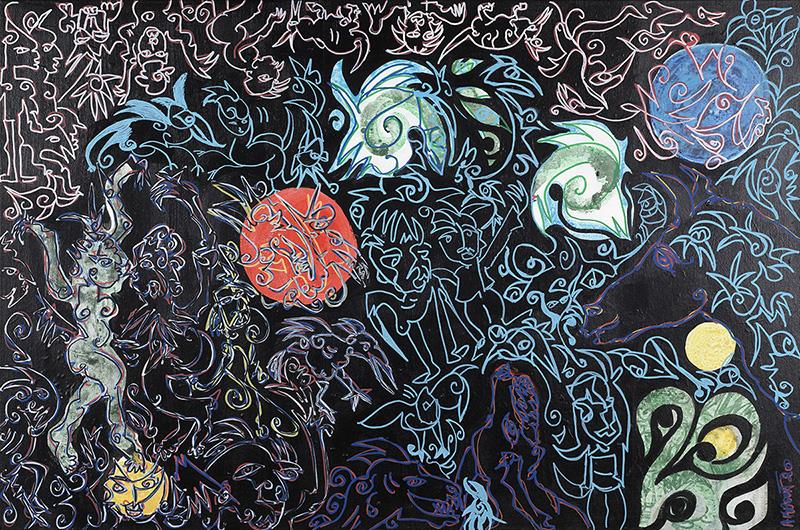Hatem Akrout
Born in 1955
Lives and works in Marseilles

« Always several coats for the background. First a yellow water-color then an oil-based white after which some red watercolor, a racial combat : white eats yellow, red eats white. Hatem Akrout then paints shapes in oil ; and he mixes everything with a rag. Hatem has made his bed ».
Jean Pierre Ostende, 1990.
« Over ten years of patient work to bring into being his own language where the trace is the syntax, emulsion the grammar, and the signs borrowed from his Carthaginian roots the vocabulary ».
Dominique Legros, 1997
« Akrout's painting is first approached with the senses. Without an abusive use of material, without overly demonstrative effects, it attracts through its simplicity : elementary signs deployed in small formats , more or less figurative scenes ( bodies, kisses ) in larger formats, earthen colors mixed with water, primary colors laid on the wood ».
Yves Gerbal, 1996
« ... fearing the void, he covers. Fearing the static : he sets in motion (anti-still life). A fear of death painted.
I don't think he tries to exorcise or tame death.
I think he tries to paint what we've forgotten : the surprise, the crispness of the gallop ».
Jean Pierre Ostende, 1990
What Hatem Akrout tells us lies between the edification of a fusional myth constituted of sparse roots and the story of the creation of its creation. There is always myth, for an artist and especially a painter, in the making of a work. To speak about creation means above all to decipher its creation. To use odds and ends to put the pieces of the chimera back together, amounts to counting the limbs of one's painting. For Hatem, making ceramic with paper, painting with drawing, cartography with legends, the personal with the general, is a way of questioning the world, that of art history and its complex sources which always reverberate in one point or another, that of the world today and its problems without immediate resolutions possible.
François Bazzoli, automne 2001